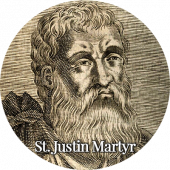

Over 35 years ago, I wrote an essay on the importance of the Latin language as cultivated in the Middle Ages (more recently republished here). I still hold the views I presented in that article. They highlighted the purpose a classical, canonical language can serve in maintaining minimal normative formulations of philosophical and theological truth. I referred not necessarily to final but to normative formulations, serving truth the way curbs in a road serve the travelers along its path—keeping them on the road to be sure, but not revealing in advance all the curves and twists that may still lie ahead. If I were rewriting the essay today, I would more explicitly pre-empt a possible misreading of my intention. I did not mean to suggest that Latin is Christianity’s, or Catholicism’s “sacred language.” For it is not. To call it such is a simple category mistake.
There are indeed religions with sacred languages, such as Hinduism with its Sanskrit, Zoroastrianism with its Avestan, Judaism with its Hebrew and Islam with its Arabic. Those tongues have been all but indissolubly wed to the religious traditions they both mediate and articulate. However, there are no parallel nuptials between the Christian faith and any language at all. Even the Latin editiones typicae issued by the Vatican for its official declarations, liturgical texts and also for the popular (“vulgar”) edition of the Bible, are no more than approved documents of reference. To these, subsequent translations must defer when negotiating conflicting construals in order to forestall preventable confusions. However, significant ambiguities may still perdure, whatever the language used. Language is not mathematics. Still, despite the challenge, translation is of the very essence of the Christian message.
The Bible is not just the most translated text in the world. It stands alone among translated books, with more than 3,300 versions. The closest runners-up can hardly reach 500. The Book of Books splits its linguistic map—for Christians at least—into two extraordinarily different languages: Old Testament Hebrew, which is as Semitic as it gets, and New Testament Greek, which belongs to an entirely different family, the Indo-European. What’s more, the content of the book seemed destined from the very beginning to follow a promiscuous series of linguistic migrations.
Already a couple of centuries before Christ, Alexandrian Jews rendered the Jewish Bible into Hellenistic Greek. This is the famous Septuagint, significantly the only version of the Old Testament cited in the New. This, in itself, is already an inspired recognition of the role of translation in Christian revelation. Some Jews actually held the very translation to be inspired. Centuries after Christ, the great St. Jerome would render both Old and New Testaments into the nascent popular Latin that was to intellectually and poetically inform the medieval world (and eventually generate the Romance tongues). Some Catholics fall into the same mistake as those Jews, and consider the Vulgate as a virtually inspired translation. It is a great and normative translation indeed, but it is the content that is inspired, not the language.
Once the increase in literacy and the invention of movable type arose, it was not long before the two most famous Protestant Bibles—the Luther Bible and the King James Version—left their unmistakable imprint on two of the languages that would mold modern thought more than most (German and English). Renderings into other European tongues, followed by multiple world languages, soon followed suit, and the industry of Biblical translation has barreled on unabated ever since.
The eagerness of the Catholic Church to affirm its adherence to unchanging doctrine in the face of multiple Lutheran, Calvinist, Anglican and Anabaptist innovations of the 16th century—followed by the explosion of denominations and new interpretations of Christian truth in the following centuries—created a tendency to retain the use of Latin in the liturgy and to a great extent in ecclesiastical studies as well. This continued not only up through the 19th century, where Latin was still a learned tongue understood by the educated (even Marx could read Latin and Greek!), but it was maintained all the way into the 20th, well beyond the now waning dominance of Latin in popular culture. By then, the language had receded into a dark and shrinking corner of the modern mind, accessible only to classicists and Catholic theologians. The rest of the public, even of those well-educated, was out of linguistic reach. The habit of only whispering parts of the Mass merely underscored this measured retreat from the duties and toils of translation.
Inevitably the Church in the Latin tradition has allowed its liturgical texts—not only in lay missals but also in those used at the altar—to be translated into the world’s tongues (still monitored by Rome, where those “typical” editions continue to hold a place of honor). In this they have followed the example of the early Church in keeping not only the Bible, but also the liturgy, available to the secular ear. Of course, some religious communities have opted to maintain the Latin, but usually will require that their members receive some training in the tongue. In general, however, the opening up of the liturgy to the multiple languages of the world has been a blessing, and long overdue. As has always been clear from the first chapter of the Acts of the Apostles, Christian truth and worship need not fear the multiplicity of the world’s tongues. Indeed, they are destined to inhabit them.
A selective and measured use of Latin in parts of the liturgy—especially when the treasures of Gregorian Chant are included—should, if I had anything to say, continue. But one of the problems with still using Latin for the entirety of parish masses today, beyond the problem of intelligibility, are the alienating pronunciation oddities in using a language that is not a commonly spoken tongue. The only thing that is worse (for an anglophone at least) than hearing a Frenchman glottalizing his r’s while saying miserere nobis is hearing Latin pronounced in the United States with an American cowboy accent.
For years I celebrated the Eucharist in Latin myself (according to the standard formulary of Pope St. Paul VI, which is the Church’s current and official “Latin Mass”), but I have also celebrated in French, English, Italian, Spanish, German, and—for the last 30 years—in Portuguese. It is a joy to hear the message of the Gospel and the ritual of the Eucharist penetrate the morphology, syntax and characteristic meter of more and more of the tongues of the world.
It’s a long road from Babel to Pentecost, but it is a road that Christianity, as no other religion on earth, is destined to walk. All minds were created to eventually understand, and—exception made of ritual formulas reserved to the ordained clergy—all mouths foreordained to take upon their lips and to hear with their own ears the words that come from the Word Itself.



